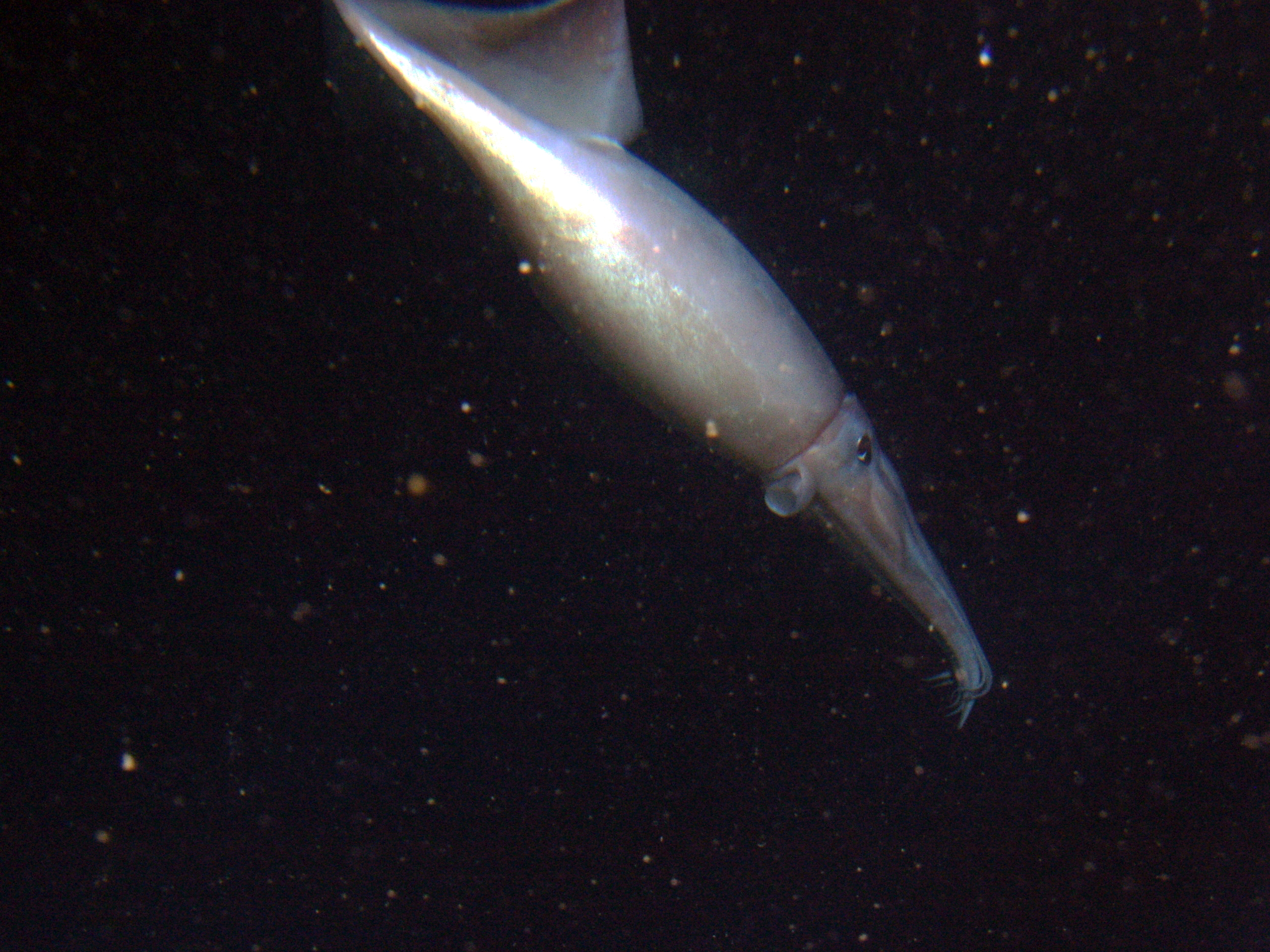Media Release
From: PNASA study finds evidence suggesting complex visual signaling in deep-ocean-dwelling cephalopods. Cephalopods that inhabit the tenebrous depths of the ocean use pigmented cells called chromatophores embedded in skin to communicate through visual signaling. However, the level of sophistication in such visual signals is unclear. Benjamin Burford and Bruce Robison used high-definition video cameras mounted on remotely operated vehicles to examine visual signaling in 30 Humboldt squids (Dosidicus gigas) at depths between 266 and 848 m in the Pacific Ocean’s California Current, the squids’ natural daytime haunt. At these depths, the squids put on flashing and flickering color displays when foraging with other squids of the same species. Together with other patterns, pale and dark illumination along the longitudinal axis of the squids’ bodies suggested signaling of intent during competitive foraging. Despite the density and frenzy of foraging shoals, the squids appeared to avoid jostling for prey, suggesting a perceived response to visual signaling of foraging intent. Analysis of pigmentation patterns during pursuit and capture of prey suggested a role for syntax in the squids’ signaling that evoked linguistic elements such as message signifiers, modifiers, and positionals. While the squids’ pigmentation patterns are produced by the overlying layer of chromatophores in skin, hundreds of subcutaneous photophores, which illuminate the muscles of the fins, mantle, arms, and head from within, are strewn across the squids’ bodies. Analysis of captured squids suggested that the social messaging encoded in the squids’ pigmentation patterns unfolds against a glowing backdrop of photophore-enabled bioluminescence, which potentially enhances pattern visibility under low light. According to the authors, the findings raise the possibility of a previously undescribed level of semantic complexity in visual communication among denizens of the deep ocean.


